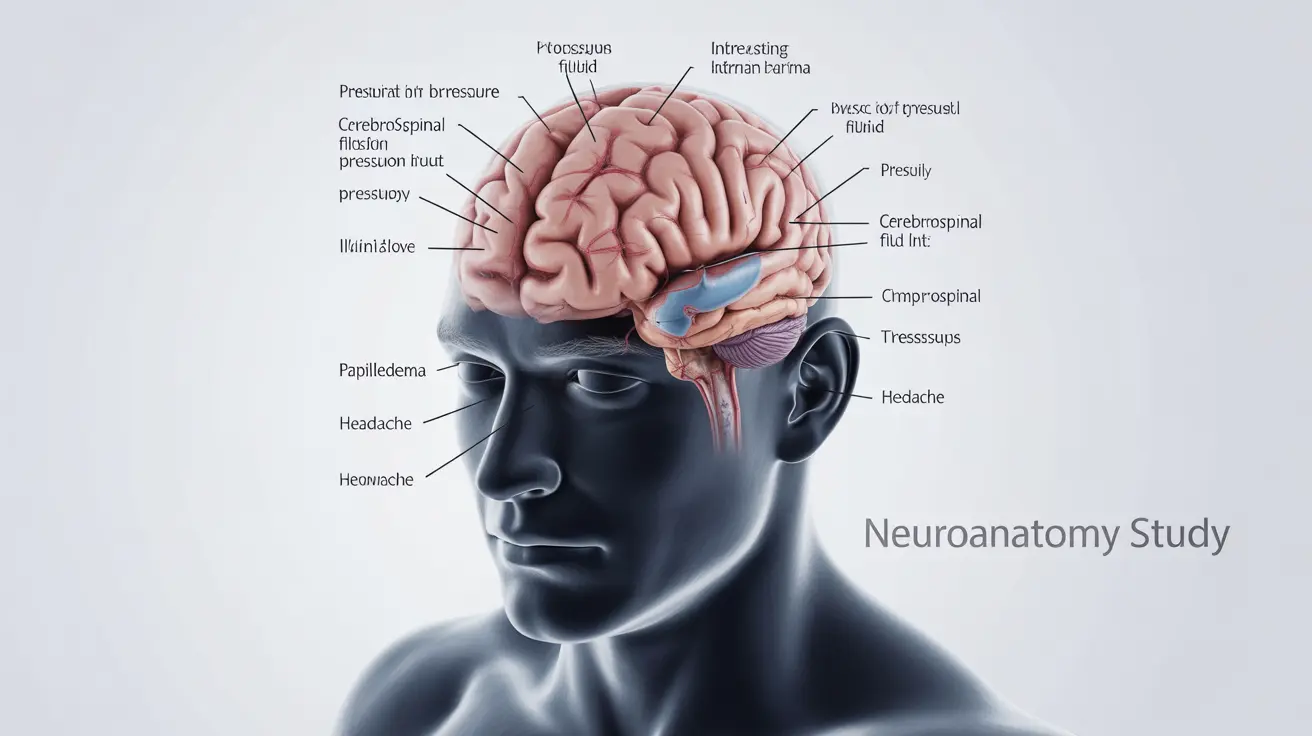Intracranial pressure (ICP) is a critical measure of the pressure inside your skull. When this pressure becomes elevated, it can lead to serious health complications and requires immediate medical attention. Understanding the signs, causes, and treatment options for increased intracranial pressure is essential for both healthcare providers and patients.
This comprehensive guide explores the key aspects of elevated intracranial pressure, including its symptoms, risk factors, diagnostic approaches, and treatment strategies. Early recognition and proper management of this condition can significantly improve outcomes and prevent severe complications.
Understanding Intracranial Pressure
Intracranial pressure refers to the pressure exerted by the brain, cerebrospinal fluid, and blood within the confined space of the skull. Normal ICP ranges from 7-15 millimeters of mercury (mmHg) in adults. When this pressure rises above normal levels, it can compress brain tissue and restrict blood flow, potentially leading to serious neurological complications.
Key Warning Signs and Symptoms
Recognizing the symptoms of increased intracranial pressure is crucial for early intervention. Common indicators include:
- Severe headaches that worsen with movement
- Persistent nausea and vomiting
- Changes in vision or double vision
- Altered consciousness or confusion
- Balance problems and dizziness
- Seizures
- Weakness or numbness in limbs
Common Causes and Risk Factors
Several conditions can lead to elevated intracranial pressure:
Medical Conditions
- Brain tumors
- Hydrocephalus
- Meningitis or encephalitis
- Stroke or bleeding in the brain
- Traumatic brain injury
Risk Factors
Certain individuals may be at higher risk for developing increased intracranial pressure, including those with:
- History of head trauma
- Brain infections
- Blood clotting disorders
- High blood pressure
- Previous brain surgery
Diagnostic Procedures
Healthcare providers use various methods to diagnose and monitor intracranial pressure:
- Neurological examinations
- CT scans and MRI
- Lumbar puncture (in specific cases)
- Intracranial pressure monitoring devices
- Ophthalmoscopic examination
Treatment Approaches
Medical Management
Initial treatment often involves medical interventions such as:
- Medications to reduce swelling
- Osmotic diuretics
- Anti-seizure medications when necessary
- Pain management
- Careful fluid management
Surgical Interventions
In severe cases, surgical procedures may be necessary:
- Placement of external ventricular drains
- Decompressive craniectomy
- Tumor removal if applicable
- Treatment of underlying causes
Emergency Warning Signs
Certain symptoms require immediate emergency care:
- Sudden severe headache
- Loss of consciousness
- Rapid deterioration in neurological function
- Unequal pupil size
- Difficulty breathing
- Severe confusion or disorientation
Frequently Asked Questions
What are the common symptoms that indicate increased intracranial pressure? Common symptoms include severe headaches, nausea and vomiting, vision changes, altered consciousness, balance problems, and seizures. These symptoms often worsen with movement or position changes.
What causes increased intracranial pressure and who is at risk? Increased intracranial pressure can be caused by brain tumors, head injuries, infections, stroke, or hydrocephalus. People with a history of head trauma, brain infections, blood clotting disorders, or high blood pressure are at higher risk.
How is increased intracranial pressure diagnosed and monitored? Diagnosis involves neurological examinations, imaging studies (CT scans and MRI), and sometimes direct pressure monitoring through specialized devices. Doctors may also perform ophthalmoscopic examinations to check for swelling of the optic nerve.
What are the medical and surgical treatment options for managing increased intracranial pressure? Treatment options include medications to reduce swelling, osmotic diuretics, and pain management. Surgical interventions may include external ventricular drains, decompressive craniectomy, or treatment of underlying causes like tumor removal.
What emergency signs of increased intracranial pressure require immediate medical attention? Emergency signs include sudden severe headache, loss of consciousness, rapid neurological deterioration, unequal pupil size, difficulty breathing, and severe confusion. These symptoms require immediate emergency medical care.




